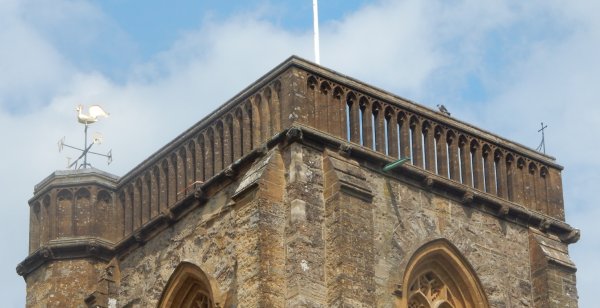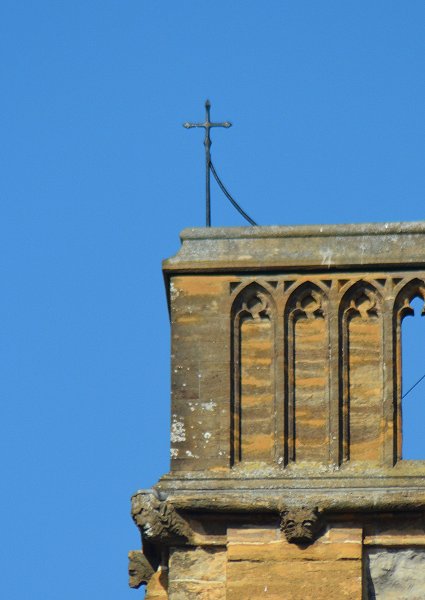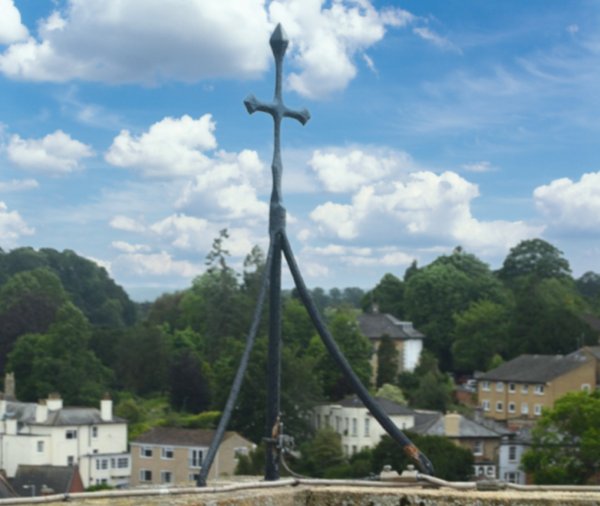the church of st john baptist
the Abbess of Syon
and the Iron Cross atop St John's church
In 1334, the advowson (the right to recommend a member of the Anglican clergy for a vacant benefice, or to make such an appointment) of St John’s was detached from the Manor of Hendford, being granted to John Maltravers from 1339. He was succeeded by his daughter, Eleanor, who married Sir John Fitz Alan, the son of the Earl of Arundel. Consequently, the advowson passed to the Arundel family who presented rectors to the benefice until 1415. In that year Thomas, thirteenth Earl of Arundel, sold the lordship and advowson to the king.
In 1415, the year of Henry V’s (reigned 1413-1422) victory over the French at Agincourt, the king personally laid the foundation stone of the Convent of Syon at Isleworth, Middlesex. In 1420 the Abbess and 35 nuns took possession of the convent, properly known as “The Monastery of St Saviour and St Bridget of Syon of the Order of St Augustine”. It was built as part of “The King's Great Work”. The king's original foundation consisted of 85 people, comprising sixty women (the Abbess and 59 nuns) and twenty five men (1 Confessor General, 12 priests, 4 deacons and 8 lay brethren).
The different sexes were “to dwell in separate habitations, to wit the said abbess and sisters within one court by themselves and the said confessor and brothers in a separate court by themselves, within the same monastery”. The legal corporate entity was “The Abbess and Convent” which could transact business by affixing its single corporate seal. While the Convent consisted of the Abbess and nuns together with the Confessor and all the religious men, the Abbess was in overall charge.
In order to part-support the convent, Henry granted them the rectory of St John the Baptist and lordship of the Borough of Yeovil, together with “two acres of land in Huish and a portion in Martock”. For the next 114 years, until the Dissolution of the Monasteries in 1534 by Henry VIII, Yeovil came under the jurisdiction of the Abbess and was administered locally by a resident bailiff in conjunction with the Portreeve and Burgesses.
This small iron
cross, some
three feet high,
fixed to the
eastern parapet
of St John's
church tower,
indicated that
the church was
exempt from
taxation while
the borough was
held by the
Convent of Syon
(between 1420
and 1534).
gallery

The parapet surmounting St John's tower. The iron cross is seen at the far right, the weathercock at far left and one of the nesting peregrine falcons on the parapet at right. Photographed in 2023.

This photograph
features in my
book 'The Church of St John the Baptist, Yeovil - a History and Guide'.
This small iron cross, fixed to the parapet of St John's church tower in the southeast corner, indicated that the church was exempt from certain levies (that is, certain tax exemptions) while the borough was held by the Convent of Syon (between 1420 and 1534). The levies were listed in a deposition of 1614 reciting a grant of Henry VII to the Abbess of Syon including freedom from subsidies and King's silvers, tonnage and poundage, etc.

This photograph
features in my
book 'The Church of St John the Baptist, Yeovil - a History and Guide'.
The cross seen close up. Photographed in 2021.